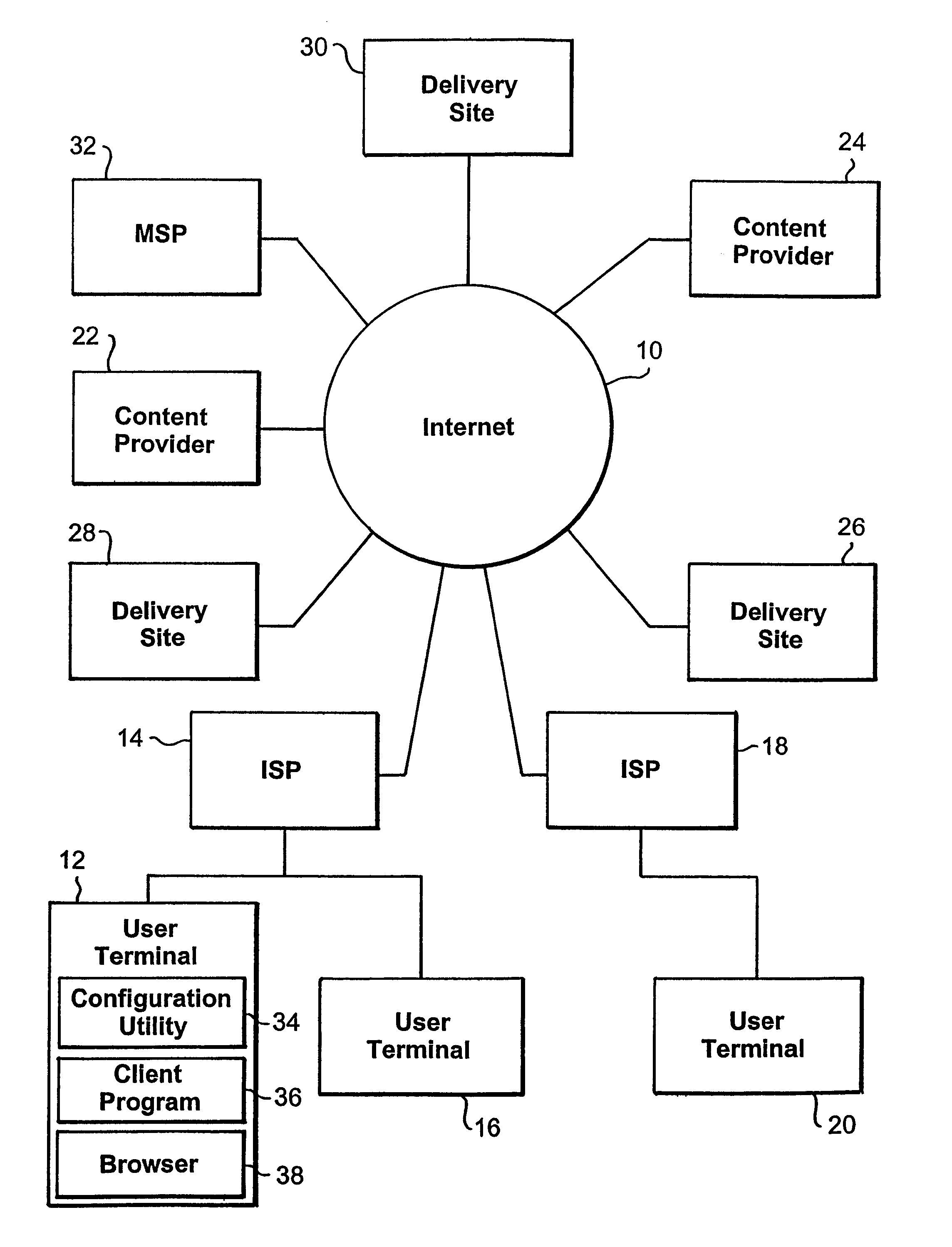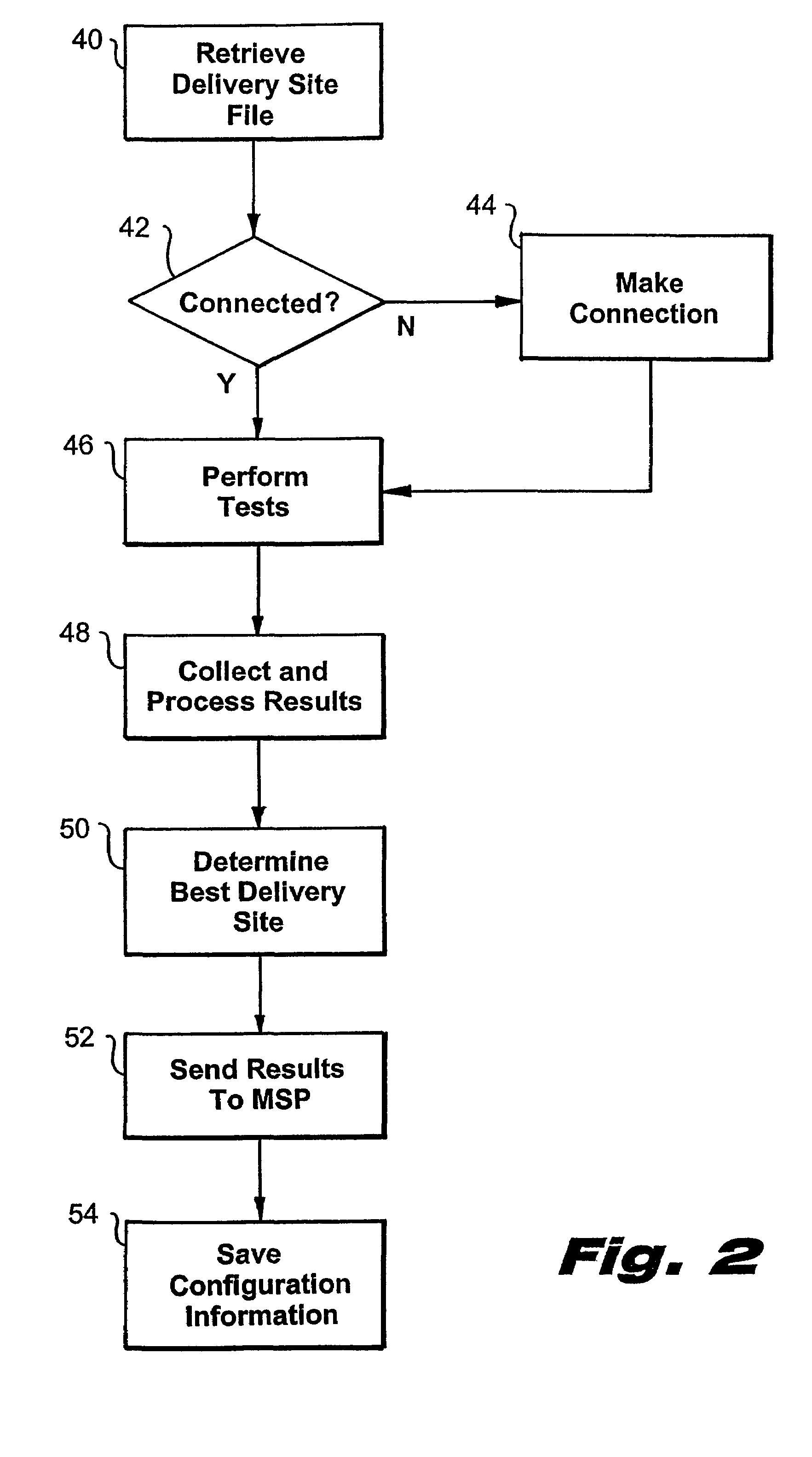Compared to first generation Web content, namely text and still images, audio clips, video clips, and software programs have extremely high storage and bandwidth requirements.
At present, it is difficult, if not impossible, to provide sustained high-speed transmission of large audio / video files over a multi-node link on the Internet.
Because the data is often transferred from afar, many factors can cause the delay or even loss of parts or all of a transmission.
Unfortunately, the present design of traditional Internet-like data networks is based on the principle that delays and significant data transmission rate variations are acceptable for ordinary data (e.g. text and still images).
In other words, the timeliness of network data transmission has been significantly compromised in order to render relatively insignificant the aggregate cost of long distance communication connections.
A system using committed network resources generally cannot take advantage of the existing pricing scheme of shared networks like the Internet, since it cannot participate in the sharing of network resources on a data packet by data packet basis.
Transmission costs thus become significant, especially when the connection is “long distance” or when the connection is continued over an extended period of time.
Another consequence of the timeliness vs. cost compromise discussed above has been the seemingly indiscriminate topographical design of the network.
It is recognized that inadequate data transfer performance of time-sensitive data on the Internet is typically caused by four factors: packet loss, excessive server utilization, the relatively low capacity of the network infrastructure, and inherent delays in the network hardware.
Packet loss, in particular, is caused by inadequate infrastructure and lack of robustness in routing.
The inherent delays are believed to be caused by, among other things, the lack of flow control between adjacent nodes in a multiple-node path on the Internet.
Consequently, the usual network performance problems are exacerbated.
Network bandwidth, or the data-carrying capacity of a particular network, is limited.
Thus, packet loss and delays increase.
Long delivery times consume a large amount of server capacity for a long time, decreasing the resources available to other users.
Accordingly, because the network infrastructure becomes increasingly congested, packet loss and delays continue to increase, transmission times rise, and server load increases further.
However, whenever peak network loads exceed capacity, the downward spiral described above will begin, causing increasing periods of poor network performance.
Some browsers are not capable of handling data other than text and images.
Digital multimedia data can have extremely high storage and bandwidth requirements.
Too slow, and the image plays back slower than originally recorded.
If the speed is uneven, then the video appears jerky, like an old-time movie.
The network design compromises discussed above generally adversely impact the transmission of audio and video data across the Internet.
While a user using a browser to “surf” the Web might not notice minor delays and transmission rate variations while retrieving text and still images, such defects become apparent and significant when real-time audio and video information is accessed.
For example, mirror sites may be widely distributed geographically, but may not be efficiently distributed on the network in terms of actual usage, network traffic, etc.
Thus, New York and Los Angeles mirror sites might both be connected to the same national Internet service provider's network, meaning that difficulty in accessing one of the sites might also affect the other.
Furthermore, mirror sites might not be optimally placed to reduce load on each server.
Furthermore, there is no guarantee of enhanced performance.
The bandwidth of the mirror site might be lower than that of the original site, or it might be overloaded for other reasons.
On the other hand, such voluntary alliances typically are not reliable and might be severed at any time.
In essence, a mirror site offers a secondary source for data, which may or may not be available, and which may improve user convenience, but which does not address network bandwidth or efficiency.
A mirror site does not account for performance characteristics of the network, nor identify available bandwidth which could be used to efficiently transmit video data while still taking advantage of the existing low-cost pricing schemes such as those on the Internet.
Currently, there is no guidance in selecting optimal locations for delivery sites, nor is there a known method permitting a user to determine which mirror site to connect to that will ensure optimum performance.
This approach is an inefficient utilization of network resources.
Clearly, mirror sites are not an optimum solution to the problem of overloaded Web sites.
A principal reason for this, among others, is the failure to consider network performance.
However, the ping program uses a low-priority network protocol known as the ICMP protocol, and accordingly does not provide meaningful performance analysis information.
However, it lacks the ability to provide meaningful performance analysis information.
Moreover, only the connectivity characteristics of paths leading to and from the single computer running the tests are typically determined; expanding the scope of testing is possible but logistically impracticable, since the Internet is so large.
Traditional network analysis techniques such as the “ping” and “traceroute” programs offer a view of network connectivity but provide little understanding of what performance can be expected from providers and mirror sites across the Internet.
 Login to View More
Login to View More  Login to View More
Login to View More 


